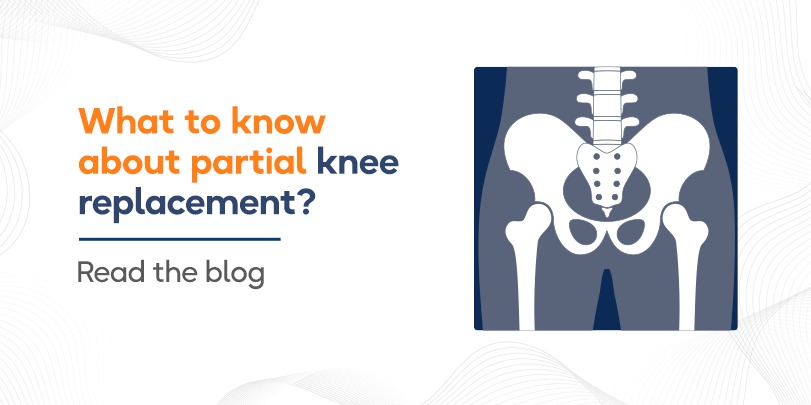How Long You Should Wait to Have Hernia Surgery
Do you have a pain in your abdomen or groin that doesn’t seem to go away, even with meds? Do you think it might be a hernia?
To answer that, we first need to understand what a hernia is and how it happens.
WHAT IS A HERNIA
When an internal organ or other body part pushes through the muscle or tissue that surrounds it ordinarily, it develops a hernia. The majority of hernias develop in the abdomen, between the chest and the hips. If you have swelling and a protrusion that may be “pushed back” into your abdomen, you may have a hernia. If it continues to expand, hernia surgery will be required to treat it.
So, how long can you wait to have hernia surgery?
Unfortunately, it is more complicated than that. Hernias come in a variety of common forms. Let’s go over the common types of Hernias.
DIFFERENT TYPES OF HERNIA
- Inguinal hernia:
In men, the spermatic cord and blood arteries that travel to the testicles enter through the inguinal canal. The circular ligament that supports the womb in women is located in the inguinal canal. Fatty tissue or a portion of the intestine protrudes into the groin near the top of the inner thigh in an inguinal hernia. Men are more frequently affected by this sort of hernia than women are.
- Femoral hernia:
At the top of the inner thigh, fatty tissue or a portion of the intestine protrudes into the groin. Femoral hernias, which mostly affect older women, are far less common than inguinal hernias.
- Umbilical hernia:
An umbilical hernia occurs when fatty tissue or a portion of the intestine protrudes through the abdomen close to the navel (belly button).
- Hiatal (hiatus) hernia:
An opening in the diaphragm, the horizontal muscle sheet separating the chest from the belly, causes a Hiatal (hiatus) hernia, in which a portion of the stomach pushes up into the chest cavity.
HOW LONG CAN YOU WAIT TO HAVE HERNIA SURGERY
Now, you might wonder, “How long can I wait to have hernia surgery?” Some small hernias, that do not grow, can be left alone. However, it is important to remember that most hernias get larger and more dangerous as time passes. While it may not be creating any problems right now, it is quite possible that if it is not treated, it will cause more major problems later.
If any of the following occur, your doctor will most likely suggest it:
- Tissue, like the intestine, becomes caught in the abdominal wall. This is known as incarceration. If untreated, it can result in strangulation.
- Strangulation of the hernia. This happens when the muscular wall squeezes the bulging tissue. As a result, the tissue’s blood supply is cut off, and it begins to die. This is a surgical emergency that can result in lasting harm. Organs that have been strangulated, if not removed soon, will make you extremely sick.
- If you have a fever or nausea, abrupt discomfort that worsens, or a hernia that becomes red, purple, or black, call our expert doctors right away.
- The hernia is causing pain or discomfort, or it is expanding.
Because of the potential for serious complications, doctors normally advise patients with a hernia to undergo a minor procedure to remove the probability of it becoming larger or worsening. How long you can wait to have hernia surgery will depend on all these factors.
DIFFERENT TYPES OF HERNIA SURGERY
Since there are different types of hernias, they have different types of hernia surgery. During surgery, the tissue that is making a bump is returned to its normal location. The muscle is then sewn back together. If needed, a mesh may be placed to provide support.
Your hernia can be removed in one of two methods, according to your doctor. Both are carried out in a hospital or surgical facility. You’ll generally be able to return home within a few days. In many circumstances, you will be able to leave the hospital on the same day as your surgery.
- Open Surgery
Before having open surgery, you will be given a general anesthetic. To open your skin, our experienced surgeons make an incision. They will gently reposition the hernia, tie it off, or remove it. Then, sutures will be used to close the weak part of the muscle where the hernia is pushed through. For bigger hernias, our surgeons may insert a piece of flexible mesh to provide additional support. It will help prevent the hernia from returning.
- Laparoscopic surgery
A general anesthetic will be used during laparoscopic surgery.
Laparoscopic surgery involves inflating your abdomen with a safe gas. This allows our surgeons to have a better view of your organs. A few tiny incisions will be made near the hernia. They will implant a thin tube with a little camera at the end. This is called a ‘laparoscope’. The surgeons treat the hernia with mesh using pictures from the laparoscope as a guide. Laparoscopic surgery frequently results in a speedier recovery. Patients are usually back to their normal routine a week sooner than with open surgery.
The sort of surgery you’ll require is generally determined by the size, nature, and location of your hernia. Our specialist doctors also take into account your lifestyle, health, and age.
The surgery does, in some cases, have alternatives.
ALTERNATIVES TO SURGERY
When a hernia causes few or no symptoms, “watchful waiting” is considered a viable alternative to surgery. People who postpone surgery, particularly males with inguinal hernias, should be on the lookout for symptoms and consult a doctor on a frequent basis.
According to the National Institute of Diabetes and Digestive and Kidney Diseases, around 70% of men with an inguinal hernia who delay treatment may develop new or worsened symptoms and will require surgery within five years. A bigger hernia is more difficult to fix if you wait too long.
Moreover, you may be advised to use a corset, binder, or truss. These supportive undergarments hold the hernia in place by applying mild pressure to it. They may provide relief from discomfort or pain. They are used if you are unable to have surgery or for brief relief prior to surgery.
That said, never, ever self-medicate these alternatives. They only work in rare cases and even then, surgery may become vital later. Use these garments only under the guidance of your doctor.
All in all, Hernia surgery is a more or less safe procedure with minimal risks. There are more benefits to undergoing the surgery as per the suggestions and recommendations of your doctor.
The fight against hernia is often a painful one. We want you to remember that all bad thighs come to an end. At Radiance Hospitals, we do it all for you. If you choose to come to us for the treatment of your hernia, we will work our hardest to ensure you are always taken care of. With us, you are never alone.












